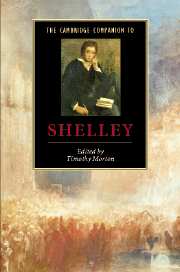6 - The translator
from Part II - Works
Published online by Cambridge University Press: 28 January 2007
Summary
Introduction
Conventional wisdom presumes that translation would rank low in poetic intention among the Romantic poets, concerned with the seer's 'unmediated vision' of the cosmos and nature, the feeling-ful exploration of the terrains of past experience, dream-states, and shifts and quickenings of mood, and the passions evoked in indignation at the 'wrongs' meted out on the unfortunate and dispossessed members of society. All of these occasions for poetry indicate for Romanticism signs of poetic and human authenticity and of the resurgence of social and spiritual possibility originating in the individuated consciousness. Translation, fundamentally derivative and secondary, an act of mediation doomed to fail, and at the core inauthentic, at best would serve as an apprentice activity for the neophyte poet, a five-finger exercise the effects of which the true poet might absorb as a strengthening of the fabric of original work.
Indeed, little in the way of Romantic translations has the massive presence of the neoclassical monuments of translation such as Dryden's Aeneid or Pope's Homer. At the same time, a poem like Keats's 'Chapman's Homer' sonnet acknowledges famously that a great translation can profoundly illuminate an otherwise inaccessible work, and not any translation can enact such a transformation: the success of a translation in this regard can be as authentic as any success in poetry. After surveying the landscape of Romantic translations in poetry, this chapter will turn to Shelley's substantial output of translations, situating them in the framework of Shelley's poetics and Romantic poetic intentions.
- Type
- Chapter
- Information
- The Cambridge Companion to Shelley , pp. 104 - 122Publisher: Cambridge University PressPrint publication year: 2006
- 1
- Cited by

